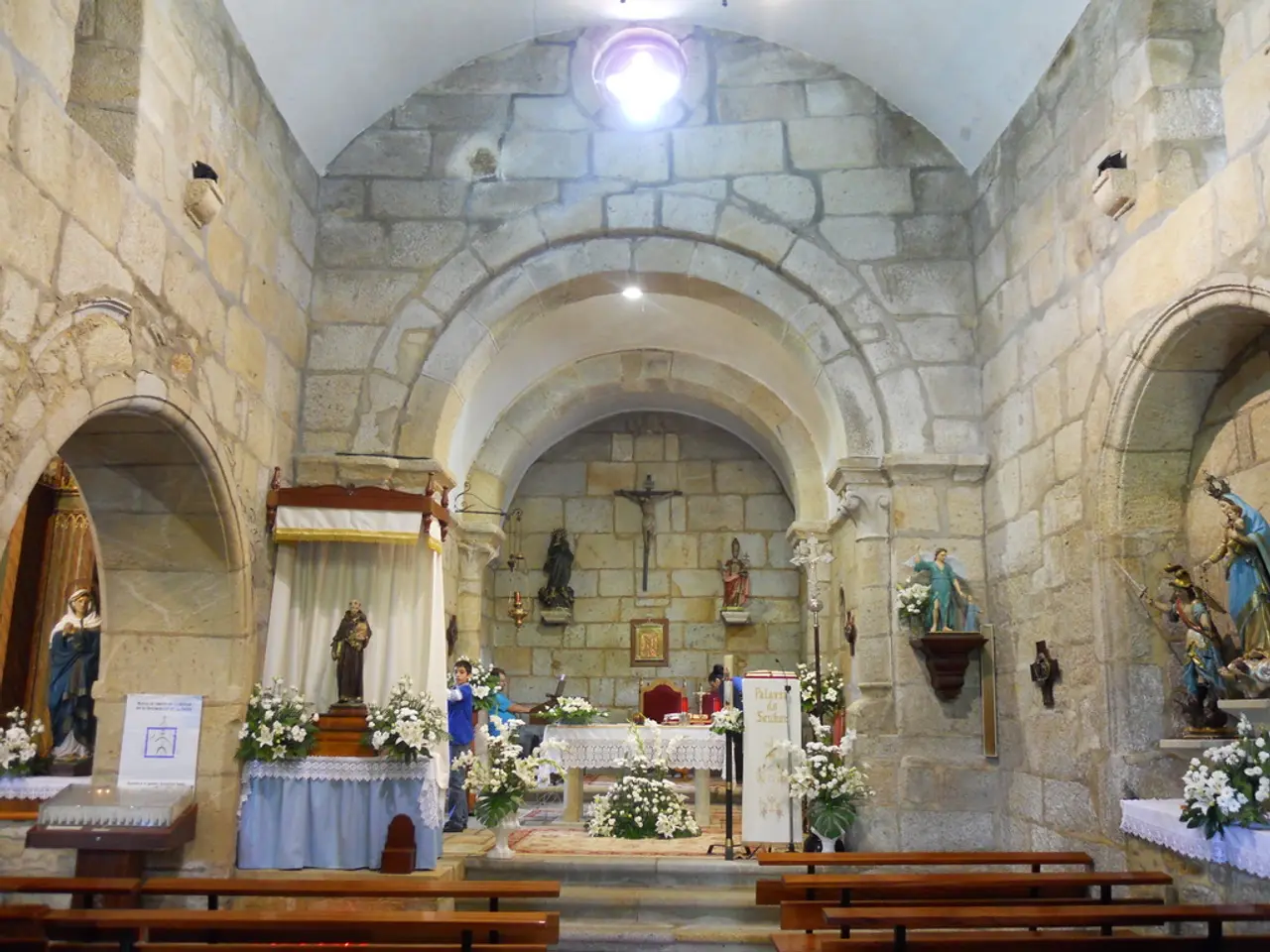Medieval Estonian church study conducted by conservation students uncovers fresh insights
Estonia's Smallest Medieval Church Unveils Hidden Secrets
The Kirbla Church, nestled in the Lääneranna Municipality, is making headlines as students from the Estonian Academy of Arts delve into its historical depths. This 13th-century church, considered the smallest medieval parish church in Estonia, is a well-preserved example of medieval ecclesiastical architecture.
In a recent conservation study, the students have been meticulously examining every millimetre of the church's ceilings and vaults. Their findings have shed light on various historical layers, including a keystone above the vault bearing a colourful coat of arms.
One of the most intriguing discoveries was the ribs of the vault, which were painted with a hourglass bone pattern, a medieval finish. This detail adds to the church's architectural significance and underscores its historical importance.
Another fascinating find was the imitation stonework on the triumphal arch. The columns supporting the organ loft were also found to have been painted with a marble imitation. These discoveries offer a glimpse into the church's once lavish decoration, a stark contrast to its relatively austere finish today.
The students' efforts have also unearthed details about the church's furnishings such as the organ loft, columns, manor owners' box, and pastor's box. These findings provide valuable insights into the church's past and contribute to a better understanding of Estonia's medieval heritage.
It's worth noting that this is not the first conservation study undertaken by students from the Estonian Academy of Arts. Over the past two decades, they have conducted similar studies on around 20 churches in total.
The Kirbla Church, however, had not been studied until now, and it had been largely overlooked by art historians. This study aims to rectify that, offering a chance to delve deeper into the church's history and share its secrets with the public.
The interior environment of the church was in poor condition a decade ago, prompting a planned visit to be postponed. Since then, the church has been fitted with an automatic ventilation system, improving the indoor environment.
The most interesting findings from the study will be left visible for public viewing, providing a unique opportunity for people to witness the church's medieval finish and understand its historical significance. The less significant findings or areas that aren't worth leaving exposed will be restored to their previous condition.
The department director, Anneli Randla, mentioned that they aim to visit all of Estonia's medieval churches, and they had already made rounds in Järva County and Lääne County. This conservation study in Kirbla Church is part of their ongoing efforts to protect and preserve Estonia's medieval heritage.
In conclusion, the conservation study of Kirbla Church is an exciting development in the field of heritage conservation. The findings not only offer insights into the church's past but also contribute to a better understanding of Estonia's medieval heritage. The study underscores the importance of conservation education and the role it plays in preserving our historical and cultural heritage.
The students' conservation study of the Kirbla Church, including their examination of the church's ceilings and vaults, contributes significantly to the field of online education and self-development, as they share their findings about this medieval church's architectural and historical secrets with a wider audience. With the Estonian Academy of Arts conducting similar studies on various medieval churches over the years, this research is crucial for the education-and-self-development of future art historians and preservationists.




